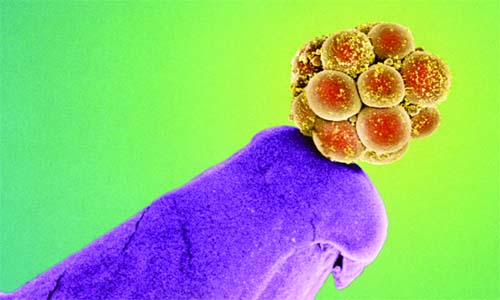Dr Kshitiz Murdia
When Sameera (38) had experienced multiple IVF failures, her gynecologist advised the couple to opt for IVF along with preimplantation genetic diagnosis (PGD). In fact, preimplantation genetic diagnosis (PGD) is being used increasingly at the fertility institutes to improve and maximise the chance of a successful IVF pregnancy, especially among couples where prior IVF failures have remained unexplained.
It has been estimated that over half of all IVF failures are blamed on the poor embryo “quality”. But what exactly is PGD and how is it different from standard IVF? “PGD is a sophisticated scientific technique to determine any genetic or chromosomal disorders present in embryos produced through in vitro fertilization (IVF). The only difference is that during the PGD, embryos are screened before they are transferred to the uterus so that couples can decide accordingly about their next step in the IVF process.
The problems with IVF are pretty well known: pregnancy rates are not as good as they should be. If some reports are to be believed, then approximately 25-30 per cent of embryos created, either via natural conception or IVF don’t survive the first 3 months of pregnancy and many don’t achieve implantation because of either genetic or chromosomal abnormality. “This is where these embryonic screening tests act like a saviour as they are performed while the embryos are developing in the IVF laboratory. A few cells are removed from each embryo and tested to ensure a healthy baby.
So, if a woman is in her late thirties and especially if she has a history of recurrent miscarriages or if either partner has a history of heritable genetic disorder or any abnormality they should definitely opt for this embryonic screening test. “This technology can be utilized in the field of assisted reproduction for aneuploidy screening and diagnosis of unbalanced inheritance of chromosomal abnormalities, such as translocations or inversions. It’s through these new genetic tools, doctors and medical experts have come to learn that some embryos that appear on the surface to be of the highest quality may carry a genetic code that makes them “poor choices” for attempting to establish a healthy pregnancy. And, to the contrary, the embryos that might have been classified as less than optimal, based on their appearance, may in fact be of the finest quality and have ten or twenty times more chance of producing a healthy pregnancy than those that would have been selected without the use of the remarkable new PGD tools.
Genetic testing is the future “In the last four-five years, genetics has progressed a long way. Apart from the high implantation rates, high rate of singleton pregnancies, and ability to eliminate the effects of age on a pregnancy and the decreased miscarriage rates, there are a range of over 600 diseases which can be now detected by PGD and PGS, that includes numerical chromosomal abnormalities and single gene disorders.”
There is an increase in the number of people who want to go in for genetic testing. Much similar to PGD, PGS ( preimplantation genetic screening) is used for testing the overall chromosomal normalcy (chromosomal numbers) and not any specific disorder. “The accuracy of PGD in determining genetic abnormalities exceeds 98 per cent. These tests have empowered the doctors to save the couple from getting into a difficult situation like termination of pregnancy, which can have severe impact on a woman, emotionally and psychologically as these embryonic tests provide a true scientific basis for understanding how and why IVF fails repeatedly in some couples.
Though these screening tests save young and hopeful couples from any kind of mental agony or emotional breakdown that may be caused due to abortion or miscarriage, there are a few concerns related to the technique. “While these tests prove to be beneficial, both for doctors and couples hoping to have a healthy baby, a few medical practitioners may misuse and exploit the technique for gender selection purpose which is totally prohibited.
Despite their positive results, these screening tests have not yet reached to the level of common men as the awareness for these tests is very low. “These tests are limited to the higher strata of the society, more because of its cost, which is a little steep. Other techniques like blastocyst culture are well known to increase chances of pregnancy by choosing an embryo which has higher chances of being euploid.
Most couples going for PGD should have one of the following conditions:
Prior unexplained IVF failure
Recurrent miscarriages
Maternal age over 38
Polycystic Ovary Syndrome
History of Ovarian Hyperstimulation Syndrome
Heritable medical condition of haemophilia
Premature ovarian failure or premature menopause
Conception of a chromosomally abnormal child or foetus
(The author is Fertility expert, Indira IVF Clinic and Test Tube Baby Centre, New Delhi)


